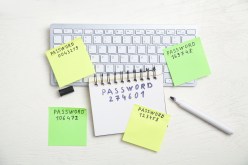Using NSW BDM Records to Build Your Family Tree: Best Practices and Strategies
If you’re interested in tracing your family history, one of the best resources available to you is the New South Wales Births, Deaths, and Marriages (BDM) records. These records provide a wealth of information about your ancestors, including their names, dates of birth and death, and marital status. In this article, we’ll explore some best practices and strategies for using NSW BDM records to build your family tree.
Understanding NSW BDM Records
Before you start delving into the NSW BDM records, it’s important to have a basic understanding of what they are and how they work. The NSW Registry of Births Deaths & Marriages (BDM) is responsible for registering all births, deaths, and marriages that occur in New South Wales. These records date back to 1788 when the first European settlers arrived in Australia.
The NSW BDM records are divided into three main categories: births, deaths, and marriages. Each record includes information such as the person’s name, date of birth or death, place of birth or death (if known), parents’ names (for birth records), spouse’s name (for marriage records), and other relevant details.
Searching for Records
Once you have a basic understanding of what the NSW BDM records are all about, it’s time to start searching for specific records that will help you build your family tree. One of the easiest ways to search for these records is by using online databases such as Ancestry.com or Findmypast.com.au.
When searching for NSW BDM records online, it’s important to keep in mind that not all records may be available online. Some older or more obscure records may only be available in person at the NSW Registry of Births Deaths & Marriages office in Sydney.
Interpreting the Records
Once you’ve located the relevant NSW BDM records, it’s important to know how to interpret them. The information contained in these records can be incredibly valuable in piecing together your family history.
For example, birth records can provide you with the names of your ancestors’ parents and their occupations, which can give you clues about their socioeconomic status and lifestyle. Death records can provide information about the cause of death and any illnesses or medical conditions that your ancestors may have had. Marriage records can provide information about your ancestors’ spouses, including their names, ages, and places of birth.
Building Your Family Tree
Now that you have a better understanding of NSW BDM records and how to interpret them, it’s time to start building your family tree. There are many online tools and resources available to help you create a visual representation of your family history.
Some popular options include Ancestry.com’s Family Tree Maker software or MyHeritage.com’s online family tree builder. These tools allow you to add information from NSW BDM records as well as other sources such as census data, immigration records, and more.
Conclusion
By using NSW BDM records effectively, you can uncover valuable information about your ancestors that will help you build a more complete picture of your family history. Whether you’re just starting out or are already well on your way in tracing your roots, following best practices and strategies for using these records will help ensure that you’re able to make the most of this valuable resource.
This text was generated using a large language model, and select text has been reviewed and moderated for purposes such as readability.





